
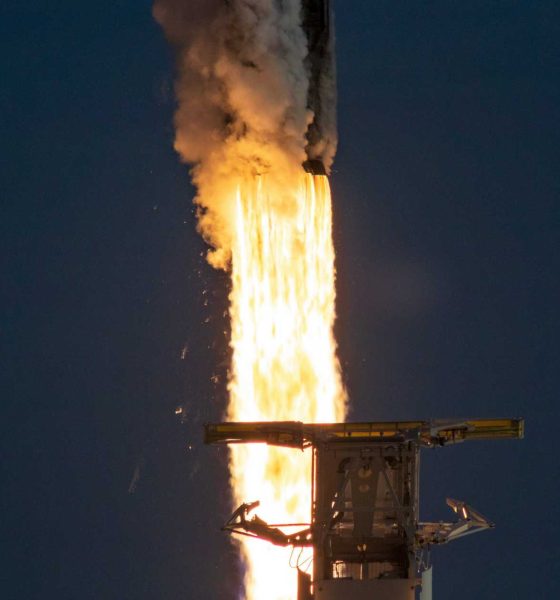
News
SpaceX loses record-breaking rocket booster after sixth successful Starlink launch
SpaceX has suffered its second rocket landing failure of 2020 despite the fact that both lost Falcon 9 boosters successfully launched 60 Starlink satellites, an anomaly that CEO Elon Musk says will need a “thorough investigation”.
After a rare last-second launch abort on March 15th and a three-day range-related delay, Falcon 9 booster B1048 lifted off with 60 upgraded Starlink v1.0 satellites on its fifth orbital-class mission. At least for the first two and half minutes, the booster performed precisely as intended, carrying a fueled upper stage and its ~16 metric ton (36,000 lb) payload to an altitude of 55 km (34 mi) and a velocity of 1.8 km/s (1.1 mi/s). However, about 10 seconds before the booster reached main engine cut-off (MECO) and stage separation, something went wrong.
While there is some ambiguity in his response, according to Musk, at least one of Falcon 9 B1048’s nine Merlin 1D engines performed an early shutdown before MECO. The rocket’s computer immediately accounted for the anomaly, extending the remaining eight-engine booster burn 5-7 seconds beyond the nominal timeline to ensure mission success. While the booster’s loss is still disappointing and the premature engine shutdown more than a little concerning, it’s critical to remember that mission success was ensured. Just 15 minutes after liftoff, the rocket’s upper stage successfully spun up and deployed another 60 Starlink satellites, bringing SpaceX’s operational constellation to an incredible ~350 satellites.
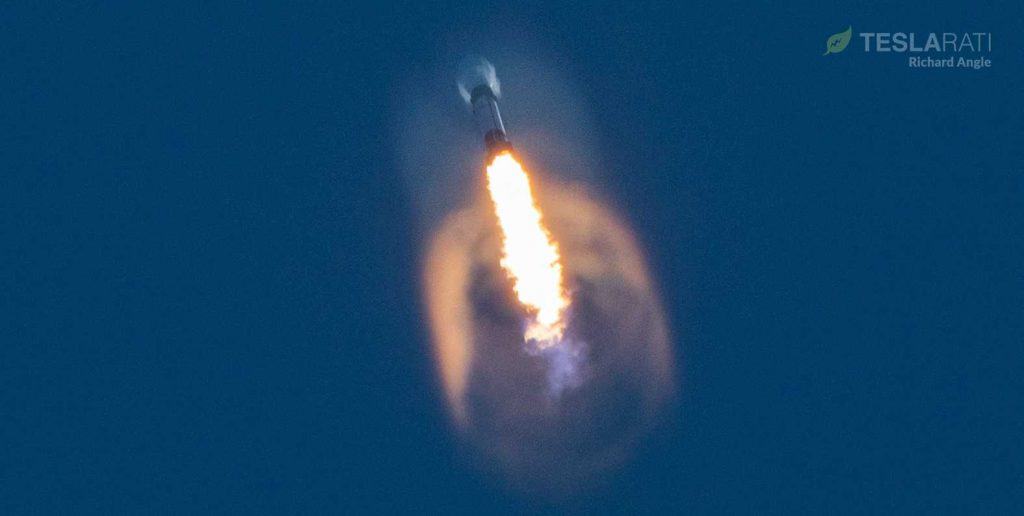
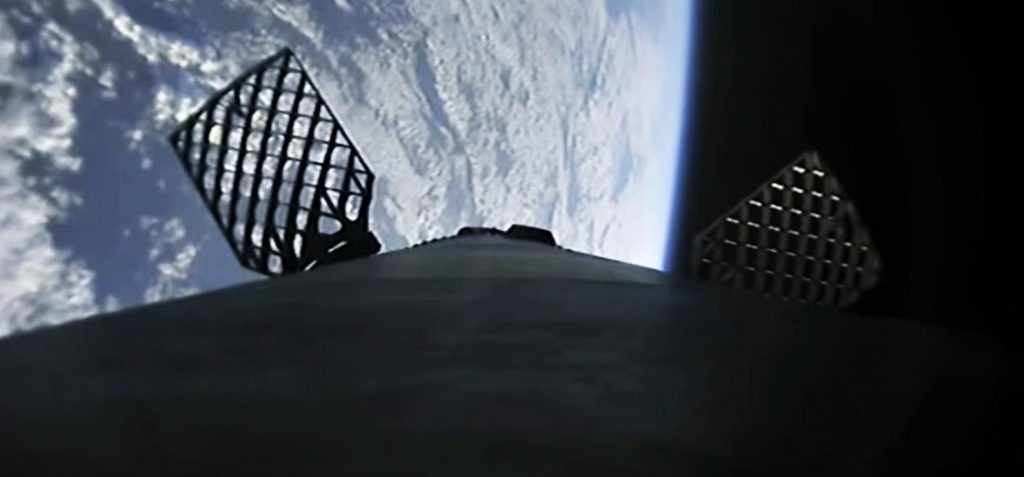
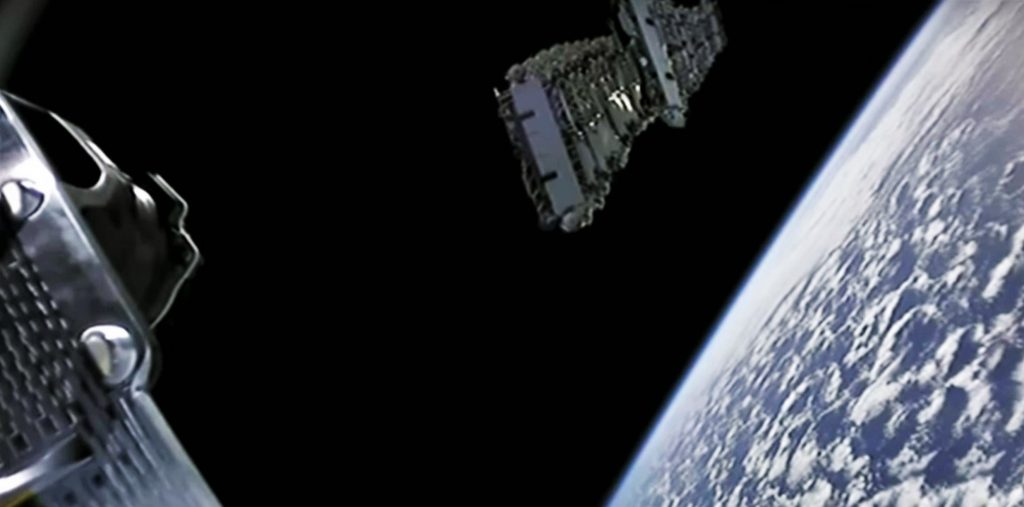
Based on live views available from SpaceX’s launch webcast, it appears that Falcon 9’s “early engine shutdown” is more of a euphemism for a fairly violent engine failure that triggered an instantaneous cutoff, preventing damage elsewhere. While SpaceX would certainly rather avoid in-flight engine failures, Falcon 9’s nine Merlin 1D booster engines are installed inside an aluminum ‘octaweb’ structure that transmits their thrust to the rest of the rocket but also effectively quarantines each engine in a blast-proof bunker.

Nevertheless, the rocket’s highly-attuned software and affected octaweb engine bunker did their jobs, instantly shutting the failing engine down while also preventing the explosion and resulting shrapnel from damaging the rest of the rocket. More likely than not, B1048’s autonomous decision to always put mission success before booster recovery lead the booster to expend a majority of the propellant needed for its landing attempt to make up for the 10 or so seconds operating at only ~89% thrust.
As a result, B1048 may have simultaneous subjected itself to a much more extreme atmospheric reentry and run out of propellant before it could complete (or maybe even start) its drone ship landing burn. There’s also a chance that the engine that failed was one of the three engines required for reentry and landing burns, an asymmetry that would be impossible to overcome on the fly. Ultimately, the booster likely impacted the ocean at a near-supersonic velocity, smashing it into aluminum confetti. Thankfully, the late B1048 had a record-breakingly productive career as an orbital-class booster, placing dozens of tons of payload into orbit over five successful launches. Its loss is regrettable but the booster has more than earned its keep.
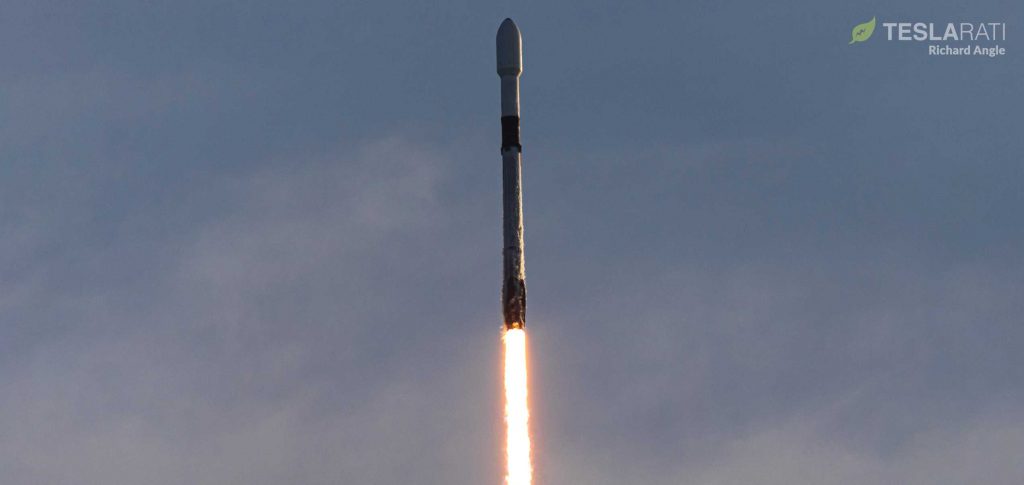
Aside from two twice-flown Falcon Heavy Block 5 side boosters of unknown status and 2-3 new boosters assigned to critical NASA and US Air Force missions, SpaceX’s fleet is now down to just three flightworthy Falcon 9 boosters. This could dramatically limit its options for near-term commercial flights, as none of those rockets – even assuming flawless launch and landing debuts – will likely be ready for their first reuses until May or June. Meanwhile, B1051 and B1049 have three and four missions under their respective belt and both completed their last launches just 50-70 days ago, while B1059 flew for the second time just two weeks ago. Despite the fact that it successfully completed its fifth mission, B1048’s in-flight engine failure will almost certainly delay upcoming launches, although the degree of those delays is up for debate.
Up next for SpaceX is SAOCOM 1B, an Argentinian radar satellite set to become the first payload launched into a polar orbit from the US East Coast in half a century. Before B1048’s anomaly, the mission was scheduled to launch no earlier than March 30th and could use any of unassigned boosters described above
Check out Teslarati’s Marketplace! We offer Tesla accessories, including for the Tesla Cybertruck and Tesla Model 3.

News
Tesla Full Self-Driving v14.2 – Full Review, the Good and the Bad

Tesla rolled out Full Self-Driving version 14.2 yesterday to members of the Early Access Program (EAP). Expectations were high, and Tesla surely delivered.
With the rollout of Tesla FSD v14.2, there were major benchmarks for improvement from the v14.1 suite, which spanned across seven improvements. Our final experience with v14.1 was with v14.1.7, and to be honest, things were good, but it felt like there were a handful of regressions from previous iterations.
While there were improvements in brake stabbing and hesitation, we did experience a few small interventions related to navigation and just overall performance. It was nothing major; there were no critical takeovers that required any major publicity, as they were more or less subjective things that I was not particularly comfortable with. Other drivers might have been more relaxed.
With v14.2 hitting our cars yesterday, there were a handful of things we truly noticed in terms of improvement, most notably the lack of brake stabbing and hesitation, a major complaint with v14.1.x.
However, in a 62-minute drive that was fully recorded, there were a lot of positives, and only one true complaint, which was something we haven’t had issues with in the past.
The Good
Lack of Brake Stabbing and Hesitation
Perhaps the most notable and publicized issue with v14.1.x was the presence of brake stabbing and hesitation. Arriving at intersections was particularly nerve-racking on the previous version simply because of this. At four-way stops, the car would not be assertive enough to take its turn, especially when other vehicles at the same intersection would inch forward or start to move.
This was a major problem.
However, there were no instances of this yesterday on our lengthy drive. It was much more assertive when arriving at these types of scenarios, but was also more patient when FSD knew it was not the car’s turn to proceed.
Can report on v14.2 today there were ZERO instances of break stabbing or hesitation at intersections today
It was a significant improvement from v14.1.x
— TESLARATI (@Teslarati) November 21, 2025
This improvement was the most noticeable throughout the drive, along with fixes in overall smoothness.
Speed Profiles Seem to Be More Reasonable
There were a handful of FSD v14 users who felt as if the loss of a Max Speed setting was a negative. However, these complaints will, in our opinion, begin to subside, especially as things have seemed to be refined quite nicely with v14.2.
Freeway driving is where this is especially noticeable. If it’s traveling too slow, just switch to a faster profile. If it’s too fast, switch to a slower profile. However, the speeds seem to be much more defined with each Speed Profile, which is something that I really find to be a huge advantage. Previously, you could tell the difference in speeds, but not in driving styles. At times, Standard felt a lot like Hurry. Now, you can clearly tell the difference between the two.
It seems as if Tesla made a goal that drivers should be able to tell which Speed Profile is active if it was not shown on the screen. With v14.1.x, this was not necessarily something that could be done. With v14.2, if someone tested me on which Speed Profile was being used, I’m fairly certain I could pick each one.
Better Overall Operation
I felt, at times, especially with v14.1.7, there were some jerky movements. Nothing that was super alarming, but there were times when things just felt a little more finicky than others.
v14.2 feels much smoother overall, with really great decision-making, lane changes that feel second nature, and a great speed of travel. It was a very comfortable ride.
The Bad
Parking
It feels as if there was a slight regression in parking quality, as both times v14.2 pulled into parking spots, I would have felt compelled to adjust manually if I were staying at my destinations. For the sake of testing, at my first destination, I arrived, allowed the car to park, and then left. At the tail-end of testing, I walked inside the store that FSD v14.2 drove me to, so I had to adjust the parking manually.
This was pretty disappointing. Apart from parking at Superchargers, which is always flawless, parking performance is something that needs some attention. The release notes for v14.2. state that parking spot selection and parking quality will improve with future versions.
Any issues with parking on your end? 14.1.7 didn’t have this trouble with parking pic.twitter.com/JPLRO2obUj
— TESLARATI (@Teslarati) November 21, 2025
However, this was truly my only complaint about v14.2.
You can check out our full 62-minute ride-along below:
Elon Musk
SpaceX issues statement on Starship V3 Booster 18 anomaly
The incident unfolded during gas-system pressure testing at the company’s Massey facility in Starbase, Texas.

SpaceX has issued an initial statement about Starship Booster 18’s anomaly early Friday. The incident unfolded during gas-system pressure testing at the company’s Massey facility in Starbase, Texas.
SpaceX’s initial comment
As per SpaceX in a post on its official account on social media platform X, Booster 18 was undergoing gas system pressure tests when the anomaly happened. Despite the nature of the incident, the company emphasized that no propellant was loaded, no engines were installed, and personnel were kept at a safe distance from the booster, resulting in zero injuries.
“Booster 18 suffered an anomaly during gas system pressure testing that we were conducting in advance of structural proof testing. No propellant was on the vehicle, and engines were not yet installed. The teams need time to investigate before we are confident of the cause. No one was injured as we maintain a safe distance for personnel during this type of testing. The site remains clear and we are working plans to safely reenter the site,” SpaceX wrote in its post on X.
Incident and aftermath
Livestream footage from LabPadre showed Booster 18’s lower half crumpling around the liquid oxygen tank area at approximately 4:04 a.m. CT. Subsequent images posted by on-site observers revealed extensive deformation across the booster’s lower structure. Needless to say, spaceflight observers have noted that Booster 18 would likely be a complete loss due to its anomaly.
Booster 18 had rolled out only a day earlier and was one of the first vehicles in the Starship V3 program. The V3 series incorporates structural reinforcements and reliability upgrades intended to prepare Starship for rapid-reuse testing and eventual tower-catch operations. Elon Musk has been optimistic about Starship V3, previously noting on X that the spacecraft might be able to complete initial missions to Mars.
Investor's Corner
Tesla analyst maintains $500 PT, says FSD drives better than humans now
The team also met with Tesla leaders for more than an hour to discuss autonomy, chip development, and upcoming deployment plans.

Tesla (NASDAQ:TSLA) received fresh support from Piper Sandler this week after analysts toured the Fremont Factory and tested the company’s latest Full Self-Driving software. The firm reaffirmed its $500 price target, stating that FSD V14 delivered a notably smooth robotaxi demonstration and may already perform at levels comparable to, if not better than, average human drivers.
The team also met with Tesla leaders for more than an hour to discuss autonomy, chip development, and upcoming deployment plans.
Analysts highlight autonomy progress
During more than 75 minutes of focused discussions, analysts reportedly focused on FSD v14’s updates. Piper Sandler’s team pointed to meaningful strides in perception, object handling, and overall ride smoothness during the robotaxi demo.
The visit also included discussions on updates to Tesla’s in-house chip initiatives, its Optimus program, and the growth of the company’s battery storage business. Analysts noted that Tesla continues refining cost structures and capital expenditure expectations, which are key elements in future margin recovery, as noted in a Yahoo Finance report.
Analyst Alexander Potter noted that “we think FSD is a truly impressive product that is (probably) already better at driving than the average American.” This conclusion was strengthened by what he described as a “flawless robotaxi ride to the hotel.”
Street targets diverge on TSLA
While Piper Sandler stands by its $500 target, it is not the highest estimate on the Street. Wedbush, for one, has a $600 per share price target for TSLA stock.
Other institutions have also weighed in on TSLA stock as of late. HSBC reiterated a Reduce rating with a $131 target, citing a gap between earnings fundamentals and the company’s market value. By contrast, TD Cowen maintained a Buy rating and a $509 target, pointing to strong autonomous driving demonstrations in Austin and the pace of software-driven improvements.
Stifel analysts also lifted their price target for Tesla to $508 per share over the company’s ongoing robotaxi and FSD programs.








